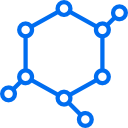CURRICULUM
NEXT COURSES HELD
TO BE CONFIRMED
Northeastern University Biopharmaceutical Analysis Training Laboratory

PART ONE: Introduction to Biologics (Online)
What are Biological Medicines – Definition
Brief History of Biological Medicines
Biologic Medicines vs. Chemical Drugs
Difference Between Biosimilars and Generics
Characteristics – Structure
Clinical Studies Methodology
Analytical Characterization – Tools, Strengths, and Gaps

PART TWO: Comparability Throughout the Life-Cycle
SESSION 1: Welcome and Introduction
- Critical Concepts from Part One – Introduction to Biologics
SESSION 2: Control of the Product
Why comparability is needed-changes including post-approval variation for biologics
- Hands-on Training: HPLC Analysis of an Ab (and aggregates)
- Characterization (Mass Spec, Structural, Other): HDX, NMR, AUC, IMS, DLF, etc.; Method Validation; Stability; Control of the Process; Data Analysis: Best Practices and Common Errors
- High Pressure Liquid Chromatography (HPLC) and Aggregation
- Data Analysis: Best Practices and Common Errors
In hands-on training, attendees will be introduced to HPLC and perform an aggregation analysis of a mAb using the stand-alone UPLC system (with PDA).
SESSION 3: Risk Based Understanding of Categorization of Changes
How to do Comparability: ICH Q5E, Interpretation of the Data, Risk-Based Understanding of Changes
Acceptance Criteria; Statistical Considerations – Quality Aspects
SESSION 4: Risk Based Understanding of Categorization of Changes
- Hands-on Training: Categorization of Changes
- Intact Mass Analysis by direct infusion and LC-MS
In this hands-on training, the attendees will perform an intact mass analysis of a mAb, comparing direct infusion to the LC-MS data. The instrumentation used (TUV-UPLC-MS): Waters H-Class quaternary solvent manager, sample manager, column manager (two column version), UV detector (TUV), and Xevo-G2S.
Group Discussion on Intact Mass Analysis
Quality Elements of Biosimilar Development – Importance of Structure/Function Relationship
Biosimilar Development & Life-cycle management

PART THREE: Clinical Considerations for the Assessment for Biosimilars
SESSION 6: General Regulation in Biosimilar Development
Comparison of Biosimilar Guidelines
Biosimilar Regulations – APEC Economies
SESSION 7: General Regulation in Biosimilar Development
Understanding the difference between Comparability and Similarity
- CMC, Quality and General Clinical Considerations
- Structure Function Analysis and Clinical Pharmacology
Considerations of Immunogenicity in Determining Biosimilars
Getting into clinical trials
- Clinical trial methodology with specific emphasis on biosimilars
- Why are clinical trials necessary in the evaluation of the benefit-risk balance of biosimilars?
SESSION 8: Case Studies and Discussion
Biosimilar case 1 (e.g. Insulin)
Biosimilar case 2 (e.g. Insulin-analog)
Group Projects (2-3 subgroups)
- (e.g. filgrastim, infliximab, etanercept)
- Design a First-in-human Study for the Development of a Biosimilar Product
Design a Supportive Safety and Efficacy Study
PK, PD, General Considerations in Efficacy, Safety, and Immunogenicity
SESSION 9: Extrapolation of Indication
Extrapolation of Indication (Both regulatory and industry perspectives)
- Principles of indication extrapolation
- Evidences required (analytical, nonclinical, clinical, etc.)
SESSION 10: Post Approval Monitoring
Post approval monitoring
- EMA requirements
- FDA requirements
SESSION 11: Wrap Up
Group Project (2-3 subgroups) Discussion
Wrap Up and Conclusion
Want to learn more about Experiential Education at the Biopharmaceutical Analysis Training Laboratory?
